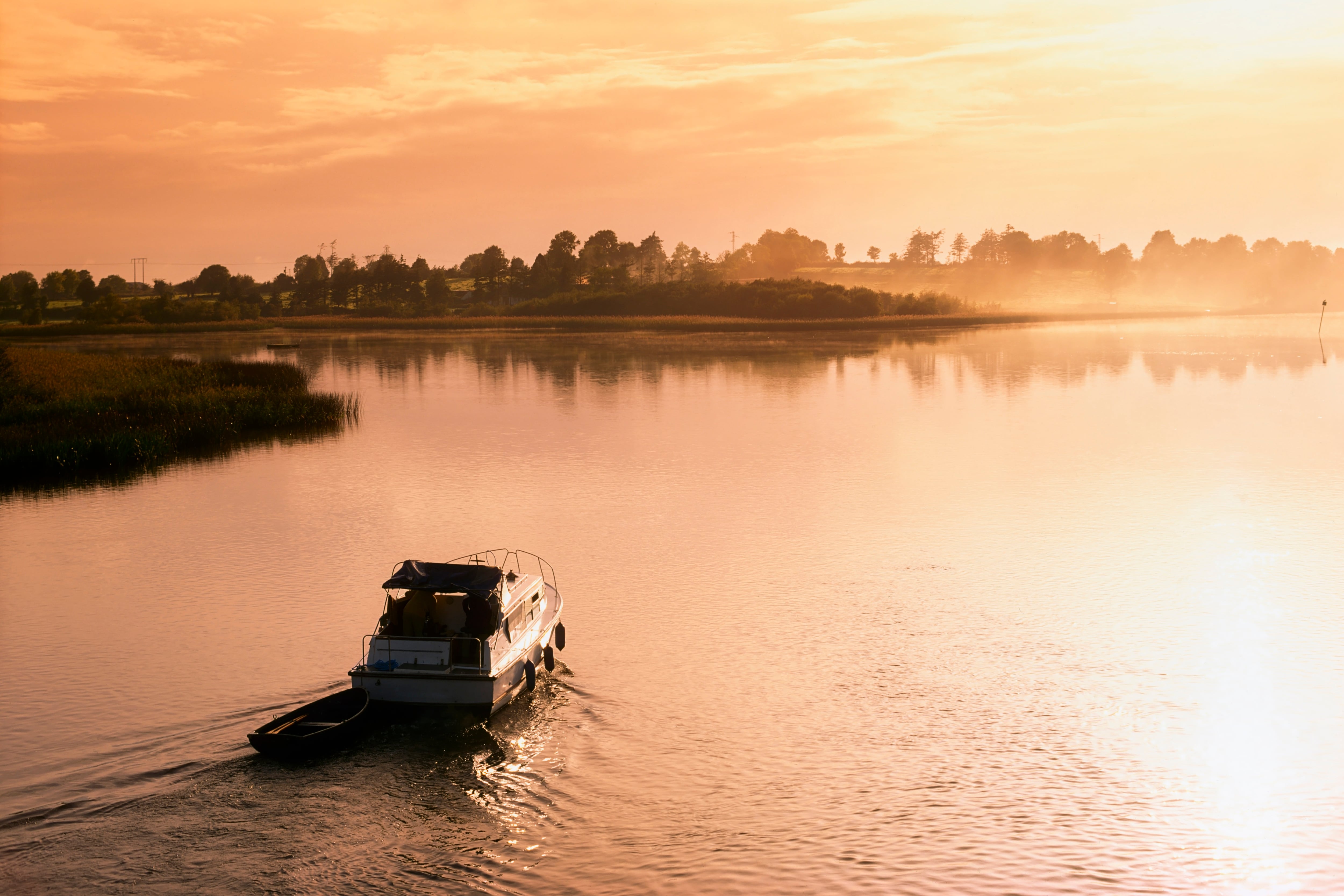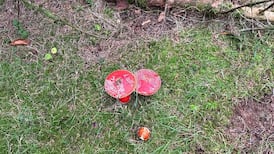One November morning two years ago, I took a small boat into Lough Ree, a lake sandwiched between Roscommon, Longford and Westmeath. Noel Kiernan, a Ballymahon farmer with an ecological approach to his land, was on a mission to find examples of the rarest breed of cattle in the country, the brindled bó riabhach. He suspected the small, isolated island herds, owned by farmers on the mainland, might be a good place to start.
As we slipped across the lake towards Inchmore and Inch Turk, the light from the winter sun intensified the shimmer on the water. Lough Ree is the second-largest lake on the Shannon, stretching 24km, and it has a range of sizeable islands with meadows that flood in winter and early spring.
The boat bobbed along. Unlike islands with defined, steep, rocky shorelines, the islands of Lough Ree gradually took shape, with trees and grasses semi-submerged in the soggy space between land and lake. In this liminal place, we spotted a line of cattle – mothers and their offspring – high-stepping it across the soaked grasslands, their tails held skyward to avoid the water.
Then, with the boat’s engine turned off, the silence was filled with the rising call of the curlew, which rippled across the water. On the edge of Inch Turk, a flock of nine birds were feeding in the wet meadows, using their down-curved bills to probe the soft ground for invertebrates. Perhaps aware of my eyes on them, they lifted into the air, calling, before veering around the island and out of view.
READ MORE
It was a mesmerising few seconds. The curlew’s call is not a sound I grew up with, yet as their evocative music filled the lake that November morning, it felt like it had been lodged in my unconscious for decades. It was like smelling a perfume for the first time in years, flooding your brain with memories and emotions.
[ You want an index for Ireland’s biodiversity crisis? I give you the humble curlewOpens in new window ]
There’s no better place in Ireland for curlew than Lough Ree. The islands have no intensive agriculture and aren’t overrun with people. A long-running predator-control programme has limited the number of non-native American mink, which otherwise would obliterate the curlew population in one season.
There are 100 breeding pairs of curlew left in Ireland, and on the current trajectory, it’s heading for extinction. They need a diverse, open landscape with wet areas, drier fields, and a patchwork of short and long vegetation. Forests, where predators can hide, must be at least 2km away. Low-nutrient, low-intensity mixed farmland with late-cut meadows is ideal.
But that’s Ireland from decades ago. Today we have intensive farms on drained land and large tracts of private and State-owned forestry. What’s currently economically viable for humans is ecologically disastrous for curlew, and their numbers have slumped by 98 per cent since the 1980s.
In the past few years, teams of ecologists, farmers and local communities have worked together to try to save them, backed by millions of euro of public money. Government departments and State agencies set up a curlew conservation programme in 2017 to stem the decline in nine strongholds. Such is the desperate plight of these birds, especially vulnerable because they nest on the ground, that researchers began to collect eggs from wild birds’ nests to incubate them artificially, rear them in pens before releasing them back into the wild, ready to fly.
The project hopes to secure a better future for breeding waders, including the curlew, in sites along the west, northwest and midlands (there’s no hope for them in the south and southeast)
In their final report last year, scientists didn’t hold back: “Ultimately, conservation efforts have come at the 11th hour (or beyond) and landscape scale changes are urgently required if there is to be a future for curlew in Ireland.” In 2017, 46 breeding pairs were recorded across the sites; by 2023, that number had risen to 48.
The struggle continued. Between 2018 and 2021, a €1.7 million project took place in the bogs of south Leitrim and the wet grasslands of south Lough Corrib, where 10 per cent of Ireland’s breeding curlew live. Thirty-five farmers were offered specialist advice and received money to manage their lands for curlew; for example, to delay mowing until after they nested. The farmers met regularly to share their knowledge with one another. Since mink, fox and magpie all eat adult curlew and their chicks and eggs, farmers were also trained to control them, and electric fences were used to keep the predators out of nesting areas.
Everyone made a monumental effort, yet by the end, the number of breeding pairs in Leitrim and Corrib declined.
But this isn’t the end. A new, publicly funded €25 million project, led by Athlone ecologist Owen Murphy, hopes to secure a better future for breeding waders, including the curlew, in sites along the west, northwest and midlands (there’s no hope for them in the south and southeast). Farmers will be paid to support these birds on their land. And it’s not just curlews that need help: with just 220 pairs of redshank and 800 pairs of lapwing left in the country, the urgency for breeding waders could not be more palpable.
The problem is that these farm projects, taking place in pockets around the country, are no match for the EU’s €57 billion farm subsidy regime, which pushes farmers in the opposite direction, so often incompatible with nature.
The curlew’s call is giving way to silence, but in parts of Ireland, farmers, scientists, and local communities aren’t giving up. It’s only fitting that we stay hopeful with them.














